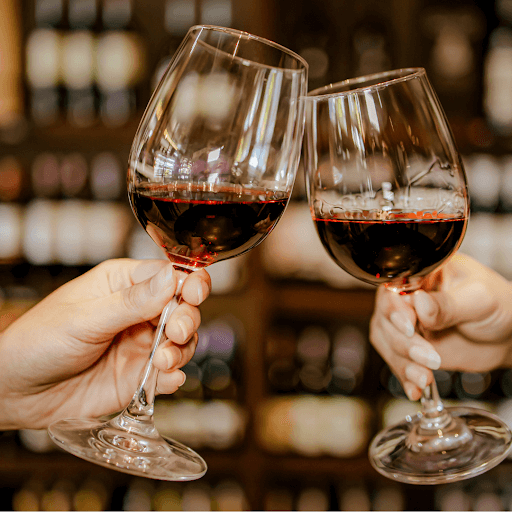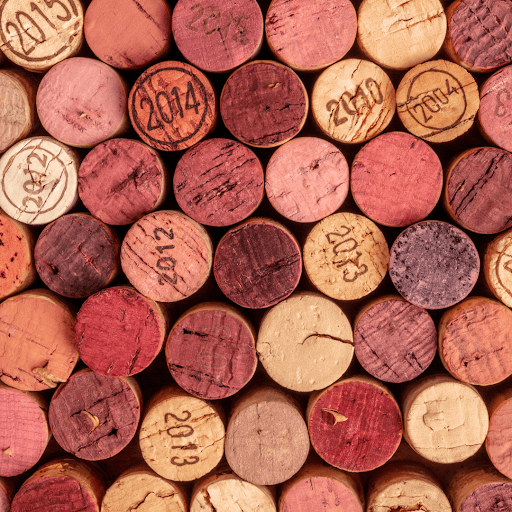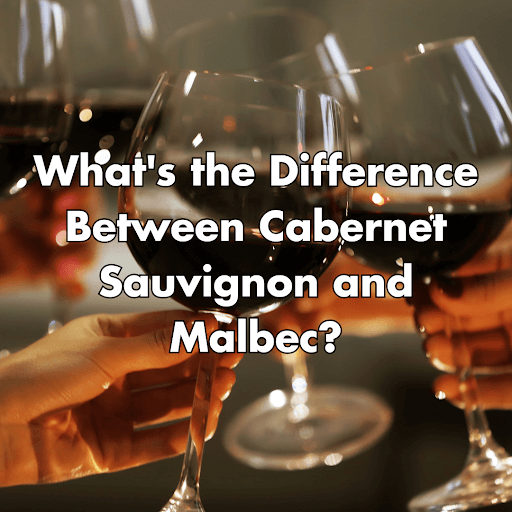At Newport Protective Club, there’s one thing we can all agree on — the right glass of wine makes any night better.
Whether you’re hanging at the bar, diving into one of our delicious subs, or sipping something smooth on a chilly night, a great bottle brings people together.
But one wine debate comes up at the club time and time again: Cabernet Sauvignon vs Malbec.
What’s the difference? And which one is better?
Some say nothing beats a bold, structured Cabernet Sauvignon, while others swear by the juicy goodness of a Malbec wine.
The truth? They’re both fantastic, and knowing the key differences can help you choose the perfect wine for the moment.
Whether you’re a seasoned wine drinker or just dipping a toe into the world of red wine, this guide will break it all down.
We’ll talk about grape varieties and flavor profile, food pairings, serving tips, and more.
Next time you’re ordering from the wine list at Newport Protective Club, you’ll be ready.

The Grapes
Let’s start at the source: the wine grapes themselves.
Cabernet Sauvignon Basics
Cabernet Sauvignon grape is one of the most famous and widely planted red wine grape varieties in the world.
It originated in the Bordeaux region of France, the result of a natural cross between Cabernet Franc and Sauvignon Blanc grapes (fun fact to drop at the bar!).
Cabernet is known for its thick skin, which contributes to its high tannin content and deep, complex flavors.
This grape thrives in a range of different regions — from cooler climates to warm climates — and makes some of the most popular red wines globally.
Malbec Grapes
Malbec wine traces its roots to the Cahors region of Southwest France, where it was historically used in Bordeaux blends as a blending grape to add color and body.
But it wasn’t until Malbec found a new home in South America — especially in Argentina — that it truly came into its own.
Argentinian Malbec, particularly from regions like Uco Valley and San Juan, now rivals the greats of Bordeaux in popularity.
The grape prefers warmer climates and produces bold, approachable wines with plenty of fruity flavor.

Flavor Profile & Tasting Notes
Here’s where these two wines start to show off their distinct personalities.
Cabernet Sauvignon wines are known for their bold structure, depth, and ability to age. Expect rich dark fruit flavors like black cherry, blackberry, and currant, with savory notes of black pepper, tobacco, cedar, and often vanilla or spice from aging in oak barrels.
These wines often give a mouth-coating type of feeling thanks to their high tannins and higher acidity. The result is a complex, layered experience that wine collectors adore.
Malbec wine offers a softer, more approachable vibe. You’ll get red fruit like plum, raspberry, and cherry, along with dark berries, cocoa, and sometimes a hint of coffee or leather.
Malbec grapes typically produce wine with softer tannins and a velvety texture, making it a perfect popular choice for sipping on its own or pairing with food.
Think of Cab Sav as the bold, brooding type and Malbec as the charming crowd-pleaser.
Body, Acidity, and Tannins
Cabernet Sauvignon is the classic full-bodied wine. With its high tannins and robust structure, it’s built to stand up to rich foods and to age gracefully for a long time.
It also tends to have higher acidity, giving it freshness and longevity.
Malbec, while often labeled a full-bodied red wine, usually leans more toward medium-bodied red wine with a rounder mouthfeel.
Its moderate tannins and plush fruit make it more accessible and easy-drinking — a good way to introduce new friends to dry red wines without overwhelming their palate.

Climate & Regions
Cabernet Sauvignon is grown in some of the finest wine regions worldwide. In France, it forms the backbone of Bordeaux blends alongside Merlot grapes, Cabernet Franc, and Petit Verdot. In Napa Valley, it produces bold, powerful wines with high alcohol content and intense fruit flavors.
You’ll also find excellent Cabernet Sauvignon wines from Washington State (especially Walla Walla), South Africa, New Zealand, and even cooler climate areas like the Loire Valley.
Malbec, meanwhile, has become synonymous with South America. Argentinian Malbec is world-famous, with standout regions like Uco Valley, San Juan, and parts of Mendoza producing rich, fruit-driven wines.
French Malbecs (from Cahors region) still offer a more rustic, earthy style that appeals to old-school red wine enthusiasts.
Blends & Versatility
Cabernet Sauvignon often stars in Bordeaux blends, adding structure and aging potential. It plays well with Merlot wines, Cabernet Franc, and Petit Verdot, and you’ll even find some adventurous Cabernet-Malbec blends these days that combine Cab Sav’s structure with Malbec’s fruit and softness.
Malbec is now more commonly bottled on its own, especially in Argentine Malbecs, but you’ll still find it used as a blending grape in some regions. Its fruity flavor and velvety texture make it a great supporting player when used creatively.
Food Pairings
Both wines are fabulous with food, but they shine in very different ways.
Cabernet Sauvignon loves bold, rich flavors. If there’s one wine that was practically made for red meat, it’s Cab Sav. Think juicy ribeyes, filet mignon, grilled lamb chops, venison, or prime rib.
The wine’s high tannin content acts like a palate cleanser, cutting through the fat and richness of these meats. The result? A perfectly balanced bite every time.
It’s also an excellent match for game birds like duck, pheasant, and quail, especially when roasted or served with berry sauces that complement Cabernet Sauvignon’s dark fruit flavors.
And don’t forget hearty stews — beef bourguignon, osso buco, short rib ragu — these rich, slow-cooked dishes practically beg for a bold red like Cabernet Sauvignon.
When it comes to cheese, blue cheese is a classic pairing. The bold, salty bite of the cheese meets its match in Cab Sav’s high tannins and acidity. Hard cheeses like aged cheddar, gouda, and Parmigiano-Reggiano also work beautifully, especially with older Cabernet Sauvignon wines where the tannins have softened.
Malbec, on the other hand, is a little more versatile at the table — a good way to go when you’re feeding a crowd with a variety of dishes.
It pairs beautifully with grilled meats (hello, BBQ night at the club), smoky brisket, burgers, roast lamb, sausages, and earthy mushroom dishes. The wine’s fruity flavor and softer tannins make it easy to pair with slightly leaner meats as well, like pork tenderloin or even turkey.
Malbec wine also plays well with dishes featuring spice. Think chipotle-glazed ribs, chili-rubbed chicken, or even Moroccan lamb with ras el hanout. The wine’s velvety texture and lush fruit balance out heat and spice nicely.
Cheese-wise, Malbec is a great match for creamy cheeses like Camembert and Brie, as well as aged options like Manchego and—you guessed it—blue cheese.
And here’s a fun tip: try pairing Malbec with milk chocolate or dark chocolate desserts. The wine’s ripe fruit and plush texture make it one of the few reds that can handle a little sweetness on the plate.
Whether you’re grilling outside on a summer night with friends, hosting a steak dinner at the club, or settling in with a winter roast and a rich cheese board, both Cabernet Sauvignon and Malbec bring something special to the table.
In fact, why not try both at your next meal? You might discover some new personal preferences along the way.
Health Benefits?
Both Cabernet Sauvignon and Malbec wine offer potential health benefits when enjoyed in moderation. They’re packed with antioxidants, polyphenols, and resveratrol — compounds linked to heart health and longevity.
Interestingly, the high tannins in Cabernet Sauvignon wines mean they often have slightly higher levels of these compounds.
But both wines are great choices if you’re looking to sip something good-for-you(ish) with your meal.
Serving Tips
Here’s a helpful tip: Serve both Cabernet Sauvignon and Malbec at room temperature — ideally between 60-65°F. In warmer climates, this may mean giving the bottle a short chill before serving. In cooler climate rooms, let the bottle sit out a bit before pouring to bring out its full range of flavors.
Decanting Cab Sav is almost always a good idea, especially if it’s a younger wine with lots of high tannins. Malbec doesn’t usually need as much air, but a quick swirl in the glass will do wonders.
Cabernet Sauvignon vs Malbec
At the end of the day, choosing between Cabernet Sauvignon vs Malbec comes down to personal preference — and the vibe of the night.
If you’re in the mood for something bold, structured, and built to impress — reach for Cab Sav. It’s a classic for a reason and pairs beautifully with serious food.
If you want something lush, fruit-driven, and incredibly easy to drink — grab a Malbec. It’s approachable, versatile, and just as at home with BBQ as it is with a nice dinner.
Of course, at Newport Protective Club, we suggest trying both. It’s the best way to discover new favorites and explore the world of red wine one glass at a time.

Frequently Asked Questions (FAQs)
Q: Are Cabernet Sauvignon and Malbec both dry?
A: Yes. Both are classified as dry red wines, meaning they contain very little residual sugar.
Q: Is Malbec or Cabernet Sauvignon better for new wine drinkers?
A: Malbec wine is often the more approachable choice for newcomers, thanks to its softer tannins and juicy fruity flavor.
Q: Does Malbec age as well as Cabernet Sauvignon?
A: Generally, Cabernet Sauvignon wines have more structure and higher acidity, making them more suited for long-term aging. Malbec can age, but is usually enjoyed younger.
Q: What’s a typical alcohol content for these wines?
A: Both range from about 13% to 15%, with Cabernet Sauvignon sometimes edging higher — especially in Napa Valley or warm climates.
Q: Do either of these wines pair with white wine dishes?
A: Both are best with heartier foods, but you can pair Malbec with some spiced poultry or grilled dishes where white wine might otherwise be used.
Q: Can I drink both wines on their own?
A: Absolutely. Both are enjoyable solo — though Cabernet Sauvignon may benefit from food thanks to its high tannins.
Q: Are there health benefits to either wine?
A: Both contain antioxidants and compounds linked to heart health, but moderation is key!
Q: Can I find great bottles of both wines on the wine list at Newport Protective Club?
A: Of course — and if you don’t see them, ask! We’re always rotating selections and happy to introduce members to new favorites.
So, Cabernet Sauvignon vs Malbec? It’s not about which one is “better.”
Both are incredible examples of world of wine craftsmanship, each with its own style, history, and charm.
At Newport Protective Club, we encourage everyone to explore both.
Order a glass of wine you haven’t tried, share a bottle with friends, and don’t be afraid to experiment with pairings.
See you at the club!

